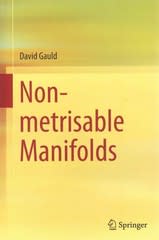Question
Suppose an architectural firm specializing in the structural restoration and renovation of historic homes and early barns is deciding whether to open a branch of
Suppose an architectural firm specializing in the structural restoration and renovation of historic homes and early barns is deciding whether to open a branch of the company in Wilmington, Vermont. Market research commissioned by the firm indicates that the Vermont location will be profitable only if the mean age of houses and barns located within a 100-mile radius of Wilmington is greater than 65 years.The architectural firm conducts a hypothesis test to determine whether , the mean age of structures located within a 100-mile radius of Wilmington, is greater than 65 years. The test is conducted at = 0.05 level of significance using a random sample of n = 64 houses and barns located in the specified area. The population standard deviation of the age of structures is assumed to be known with a value of = 13.6 years. The firm will open a Vermont branch only if it rejects the null hypothesis that the mean age of structures in the specified area is less than or equal to 65 years.To summarize this hypothesis test refer to the chart given below.
R eject the Null = Open the Branch
Fail to Reject = Do Not Open the Branch
The null hypothesis is rejected when the sample mean Xis a greater than or equal to 1.645 b greater than or equal to 62.2 c less than 67.8 d less than 1.645 e, 62.2 f, greater than or equal to 67.8 . Therefore, the architectural firm will make the decision not to open a branch in Vermont if Xis a greater than or equal to 1.645 b greater than or equal to 62.2 c less than 67.8 d less than 1.645 e, 62.2 f, greater than or equal to 67.8 .
Suppose that the true value of is 68 years. The probability that the architecture firm commits a Type II error is a, 0.4207 b 0.4960 c 0.05 d 0.4522 .
If the true value of is 68 years, the power of the test is a 0.5793 b 0.95 c 0.5478 d 0.5040 .
Based on the level of significance it has selected for its test, the architectural firm is willing to risk a a, 0.025 b 0.05 c 0.95 d 0.4960 probability of opening an unprofitable branch. It is willing to risk a 0.10 probability of not opening the branch when =69. (In other words, it is willing to fail to reject the null hypothesis when it actually should have rejected the null hypothesis only 10% of the time). What should the firm do?
a, Increase its sample size.
b, Decrease its sample size.
c, Decrease .
d, Do nothing; its current risks are acceptable.
Step by Step Solution
There are 3 Steps involved in it
Step: 1

Get Instant Access to Expert-Tailored Solutions
See step-by-step solutions with expert insights and AI powered tools for academic success
Step: 2

Step: 3

Ace Your Homework with AI
Get the answers you need in no time with our AI-driven, step-by-step assistance
Get Started


